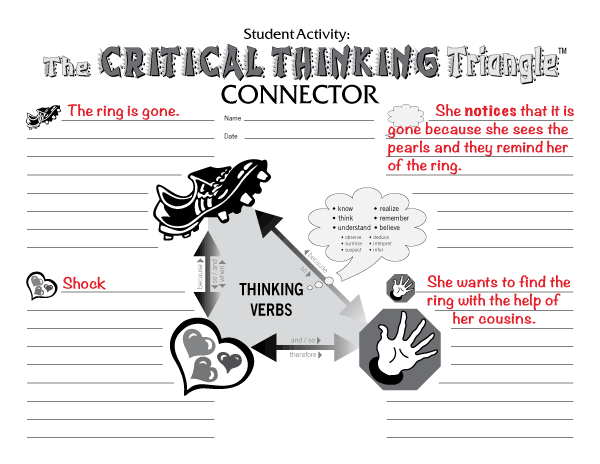Menu
-
- Home
-
About Us
-
The Approach
-
Linking Language & Literacy
-
MindWing Learning
-
Learning Resources
-
SHOP
-
Blog
-
- About MindWing
- Our People
- Contact Us
- Your Account
- Login
-
Spain (EUR €)

Maryellen’s Analysis of 5th-Grade Writing Sample
May 31, 2016 4 min read
 This next written retell of Too Many Tamales is by Ray, a student in Grade 5. We’ve included a typed version of his writing, an analysis and a conference suggestion for use during the Writing Process.
This next written retell of Too Many Tamales is by Ray, a student in Grade 5. We’ve included a typed version of his writing, an analysis and a conference suggestion for use during the Writing Process.
One night a gril named Marya was wereing her mother’s ring. She was making tomalies with the ring on. When she was done making tamales the ring was not on her finger.
Two hours later her cousens arrived. So she took her cousen’s upstares to play. When she was playing with her cousens she noticed the ring was gone.
So they all whent down stairs to look for the ring. So the looked I the tomales. So the ate all of them but it wasen’t in any.
It was on her mothers finger. So they had to make more tamales.
Introduction
The descriptive details in Emma’s writing (see May 13 blog) and the use of story grammar components indicating advancing structure and content are evident—but to a lesser degree—in Ray’s sample.
For ease of analysis, we have segmented Ray’s written sample into four “episodes,” as we did with Emma’s, for convenience and comparison. One may note that the spelling is a problem in this sample. Spelling is one of the facets of literacy that frustrates many children, causing them to doubt their competence in writing. However, poor spelling is not a reason for waiting to bolster oral and written narrative competence! We want to foster expression of Ray’s higher order thinking through narrative development and the generation of inference, given the Actions of the Character.
Notice the cohesion: There is evidence of temporal (one night, when, later, when) and causal cohesive ties (so, but).
Episode #1
One night a gril named Marya was wereing her mother’s ring. She was making tomalies with the ring on. When she was done making tamales the ring was not on her finger.
Analysis
There is no evidence here of a dilemma or Feeling. It is an Action Sequence.
Conference Points
It would be important to build the story grammar elements through discussion and the use of an episodic organizer beginning with the Reactive Sequence Map: Kick-Off and Reaction. Maria’s dilemma could be identified and mapped, and talked about in this way. The Story Grammar Marker® iPad App would be a good choice for Ray.
Episode #2
Two hours later her cousens arrived. So she took her cousen’s upstares to play. When she was playing with her cousens she noticed the ring was gone.
Analysis
The Kick-Off is stated as one of the Actions but not embellished by noting the Feelings or Mental States surrounding it. The Kick-Off is stated as a happening/action along with the cousins’ arrival: the playing upstairs, etc.
Conference Points
In this instance, a lesson target would be the completion of the Critical Thinking Triangle®.

Feelings, Mental States and Plans of the Character along with cohesive tie choices (on the arrows) would enable Ray to talk about more complex text. Ray used the verb “notice” in writing. This indicates a Character’s thought, or Mental State, which signals advancing story grammar structures.
Episode #3
So they all whent down stairs to look for the ring. So the looked I the tomales. So the ate all of them but it wasen’t in any.
Analysis
Ray notes that they looked for the ring in the tamales and ate all of them but Maria’s motivation was not evident. Use of So and but indicate a causal cohesive connection.
Conference Points
The intervention here would be to think aloud with Ray using a CTT® to generate inferences concerning Maria’s Feelings, Mental States and Plans that these Actions indicated.
Episode #4
It was on her mother’s finger. So they had to make more tamales.
Analysis
Again, the Kick-Off of seeing of the ring on the mother’s finger is expressed, but only as a descriptor of the scene in the living room. There are no story grammar connections to motivations or thoughts or Plans. Two action statements are expressed—one following the other—using a causal cohesive tie. This indicates that as a result of seeing the ring on Mom’s finger, they made more tamales. While it is true—that the ring was on the mother’s finger—this was not the direct cause for making more tamales.
Conference Points
In this case, Character motivations, Plans, Reactions and Consequences led to the making of more tamales. Again, inference generation using the related icons of the CTT® is indicated.
Summary
Ray’s written expression is a series of Action Sequences. Some cohesive ties such as “so, but” are used within sentences, but the elements of story grammar are limited and require the instructor/therapist to help Ray generate and verbalize inferences made through the use of the Critical Thinking Triangle® for discussion. This same format may be used with small groups of students in therapy or in the inclusive setting. There is a need to focus on elaboration of the Kick-Offs and Reactions as a beginning attempt to build up to Stage 5, the Complete Episode, as quickly as possible, given Ray’s age and academic expectations.
Leave a comment.
Comments will be approved before showing up.
